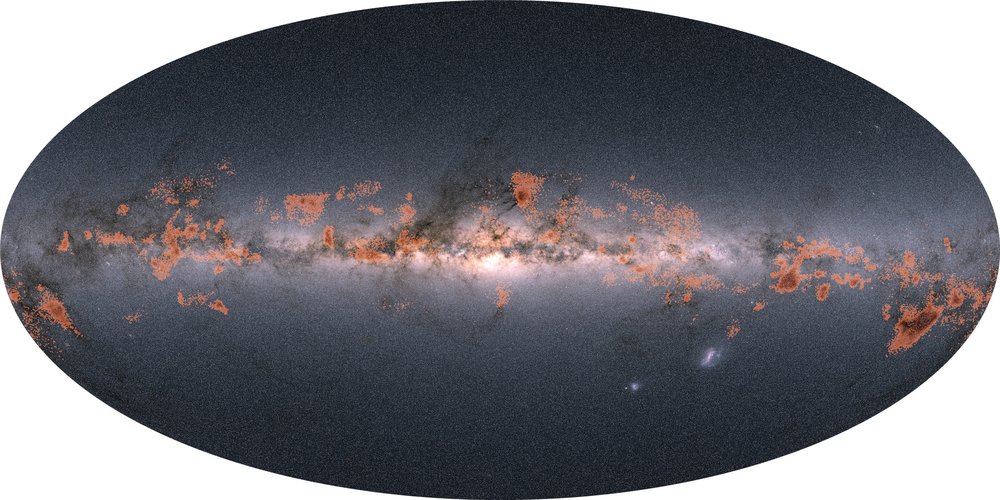
Copernical Team
SpaceX looks to launch Starship on Tuesday night after two days of scrubs
This request seems a bit unusual, so we need to confirm that you're human. Please press and hold the button until it turns completely green. Thank you for your cooperation!
Press and hold the button
If you believe this is an error, please contact our support team.
185.132.36.159 : b4cf5b68-f2f5-471b-830f-b2a9671a
Four laser links over 300 million kilometres: ESA concludes daring optical communication campaign

Over the summer, the European Space Agency ran an optical communication demonstration campaign using two observatories on Earth and NASA’s Psyche mission. All four optical links were successful.
Turning Martian soil into metal: Scientists test new extraction process
This request seems a bit unusual, so we need to confirm that you're human. Please press and hold the button until it turns completely green. Thank you for your cooperation!
Press and hold the button
If you believe this is an error, please contact our support team.
185.132.36.159 : 51f387b4-bdda-452a-aa20-78958d84
Time moves fast when you are preparing for liftoff!
 Video:
00:02:46
Video:
00:02:46
This video shows a timelapse of the launch preparations for Europe’s first MetOp Second Generation, MetOp-SG-A1, weather satellite, which hosts the Copernicus Sentinel-5 mission. MetOp-SG-A1 was launched aboard an Ariane 6 rocket from the European spaceport in French Guiana, on 13 August at 02:37 CEST (12 August 21:37 Kourou time).
MetOp-SG-A1 is the first in a series of three successive pairs of satellites. The mission as a whole not only ensures the continued delivery of global observations from polar orbit for weather forecasting and climate analysis for more than 20 years, but also offers enhanced accuracy and resolution
Gaia proves our skies are filled with chains of starry gatherings

In the past decade, the European Space Agency’s Gaia mission has revealed the nature, history, and behaviour of billions of stars. Our pioneering stargazer has reshaped our view of the skies around us like no other, revealing that star clusters are more connected than expected over vast distances.
SpaceX scrubs latest Starship launch due to bad weather
 Bad weather on Monday forced SpaceX to postpone the latest launch of its massive prototype Starship rocket, key to founder Elon Musk's dreams of colonizing Mars and NASA's plans to return astronauts to the Moon.
The tenth test flight, which could now happen as soon as Tuesday, comes at a time of heightened scrutiny for the world's most powerful launch vehicle following a string of explos
Bad weather on Monday forced SpaceX to postpone the latest launch of its massive prototype Starship rocket, key to founder Elon Musk's dreams of colonizing Mars and NASA's plans to return astronauts to the Moon.
The tenth test flight, which could now happen as soon as Tuesday, comes at a time of heightened scrutiny for the world's most powerful launch vehicle following a string of explos Uganda biomass use may improve through Aston University mapping data
 New research from Aston University could transform how Uganda manages its biomass resources by providing community-level data instead of national averages.
Scientists at the Energy and Bioproducts Research Institute (EBRI) have created detailed maps of forest biomass supply and local energy demand. Their work highlights where demand exceeds availability, where supply is balanced, and where
New research from Aston University could transform how Uganda manages its biomass resources by providing community-level data instead of national averages.
Scientists at the Energy and Bioproducts Research Institute (EBRI) have created detailed maps of forest biomass supply and local energy demand. Their work highlights where demand exceeds availability, where supply is balanced, and where Mitsubishi Electric to Lead JAXA Fund Project on Next Generation Solar Cells for Satellites
 Mitsubishi Electric Corporation (TOKYO: 6503) has been chosen as a representative organization under JAXA's Space Strategy Fund for the initiative "Development of Domestic Solar Cells, Cover Glass, and Solar Arrays," part of the agency's first-phase program to strengthen Japan's satellite component supply chain. A formal contract has been signed with JAXA.
Rising demand for satellite solar
Mitsubishi Electric Corporation (TOKYO: 6503) has been chosen as a representative organization under JAXA's Space Strategy Fund for the initiative "Development of Domestic Solar Cells, Cover Glass, and Solar Arrays," part of the agency's first-phase program to strengthen Japan's satellite component supply chain. A formal contract has been signed with JAXA.
Rising demand for satellite solar Musk's xAI sues Apple, OpenAI alleging antitrust violations
 Elon Musk's companies xAI and X filed a sweeping US antitrust lawsuit Monday against Apple and OpenAI, alleging the tech giants formed an illegal partnership to stifle competition in artificial intelligence and smartphone markets.
The 61-page complaint, filed in federal court in Texas, accuses Apple and OpenAI of entering an exclusive deal that makes OpenAI's ChatGPT the only generative
Elon Musk's companies xAI and X filed a sweeping US antitrust lawsuit Monday against Apple and OpenAI, alleging the tech giants formed an illegal partnership to stifle competition in artificial intelligence and smartphone markets.
The 61-page complaint, filed in federal court in Texas, accuses Apple and OpenAI of entering an exclusive deal that makes OpenAI's ChatGPT the only generative Dragon supply mission docks with International Space Station
 The International Space Station received more than 5,000 pounds of supplies after a SpaceX cargo spacecraft arrived there Monday.
NASA reported in a press release that a cargo Dragon ship, serial number C211, docked with the Harmony utility hub of the ISS at 7:05 a.m. EDT as part of the 33rd Commercial Resupply Services mission, or CRS-33, after launching Sunday via a SpaceX Falcon 9 ro
The International Space Station received more than 5,000 pounds of supplies after a SpaceX cargo spacecraft arrived there Monday.
NASA reported in a press release that a cargo Dragon ship, serial number C211, docked with the Harmony utility hub of the ISS at 7:05 a.m. EDT as part of the 33rd Commercial Resupply Services mission, or CRS-33, after launching Sunday via a SpaceX Falcon 9 ro 